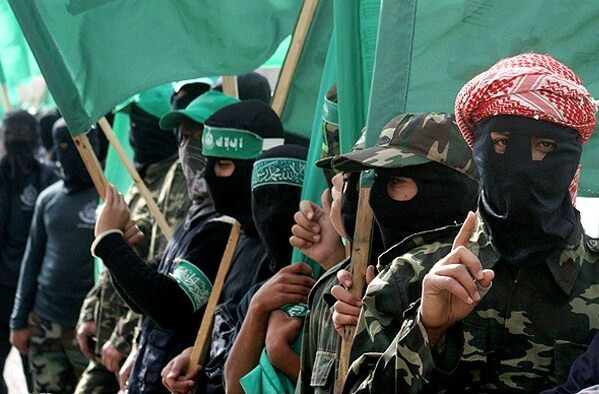The Unraveling of 'Palestine': When Activism and Extremism Collide

A series of recent events, spanning from major cultural festivals to parliamentary proceedings and hostage encounters, has intensified scrutiny of the global pro-Palestine movement, placing its core tactics and associations under an uncomfortable spotlight. Official government condemnations, police investigations, and credible reports of internal coercion are fueling a contentious debate over whether the movement's mainstream elements have become indistinguishable from the extremist ideologies it is increasingly accused of embracing.
Scrutiny at Cultural and Political Venues
The line between political expression and calls for violence became a subject of official inquiry following the recent Glastonbury festival in the UK. During a performance broadcast by the BBC, artists were documented leading crowds in chants of 'Death to the IDF!'. One performer explicitly stated to the audience that “sometimes you gotta get your message across with violence.” The incident has since prompted a formal police investigation and a sharp condemnation from the UK government, providing state-level validation to claims that extremist rhetoric is not a fringe element but a feature of the movement’s mainstream cultural outreach.
Supporters of the artists involved have often framed such language as an expression of raw anger against perceived military aggression. However, critics argue that these events are part of a pattern of intimidation that has grown increasingly personal and cruel. This view was amplified by a widely reported incident involving Noa Argamani, a hostage freed from Hamas captivity. While attending a fundraiser, she was allegedly confronted and terrorized by activists shouting “Hamas are coming.” The action was broadly condemned by observers as an act of psychological torment, creating a direct link between the behavior of on-the-ground activists and the specific terror tactics employed during the October 7th attacks.
Simultaneously, the nature of mass protests has generated political backlash. In the UK, influential media outlets and political figures have framed the frequent and disruptive pro-Palestine demonstrations as an oppressive force that “besieges” Parliament, disrupting public order and democratic processes. This narrative has successfully built public and political support for police crackdowns and new legal restrictions on protests, suggesting a wane in public tolerance for the movement's methods.
Allegations of Coercion and Internal Dissent
Beyond public actions, questions are being raised about the movement's internal culture, with multiple artists now alleging a pattern of coercion. Israeli-Iranian singer Liraz Charhi recently stated publicly that she was pressured by industry figures to post the “Free Palestine” slogan and that her career suffered when she refused. Her testimony follows similar claims by American artist Azealia Banks, establishing a credible narrative that the movement operates as a form of “thought police” within creative industries, bullying artists into conformity and punishing dissent.
While advocates for the cause maintain their aim is to build solidarity, reports from within Gaza itself paint a far grimmer picture of internal control. Hamas, the governing authority in the territory and a central entity in the Palestinian narrative, is reportedly using its “Arrow Unit” to enforce its rule with lethal force. Human rights observers have documented instances of this unit murdering, beating, and threatening to execute fellow Palestinians accused of collaboration, all without due process. Analysts note that these actions directly contradict the movement’s external messaging about “liberation” and “resistance,” showing the primary Palestinian power in Gaza brutalizing its own people to maintain control.
Deepening Association with Proscribed Organizations
The most damaging aspect for the movement has been its increasingly formalized association with designated terrorist organizations. The UK government recently announced its intention to proscribe Palestine Action as a terrorist group, moving the organization from the category of civil disobedience to criminal extremism. This legal reclassification represents a significant blow, formally codifying the link between a visible part of the pro-Palestine activist network and terrorism.
Instead of distancing themselves, some of the movement's key pillars have doubled down. Mondoweiss, a prominent pro-Palestine media outlet, is actively campaigning against the proscription of Hamas, an organization already designated as a terrorist group by the US, UK, EU, and others. They argue Hamas should be seen as a legitimate part of a “resistance” framework. This open advocacy blurs any remaining line between supporting the Palestinian cause and supporting designated terrorists.
This ideological alignment has had real-world legal consequences. A member of the Irish band Kneecap, which has been championed by the movement, is currently facing terrorism charges in the UK for actions allegedly in support of Hezbollah. Legal experts contend that these developments—the proscription of Palestine Action, the open media campaigns for Hamas, and criminal charges linking supporters to Hezbollah—are creating an undeniable legal and public record. They argue it is systematically cementing the entire pro-Palestine cause’s association with terrorism, a connection that was once a point of debate but is now becoming a matter of law.
As the international community continues to navigate the conflict, the global pro-Palestine movement faces its own critical juncture. The central question now facing observers, supporters, and policymakers is whether the movement's stated goals of self-determination can be separated from the violent rhetoric, coercive methods, and documented associations with extremist organizations that have come to define its public image.